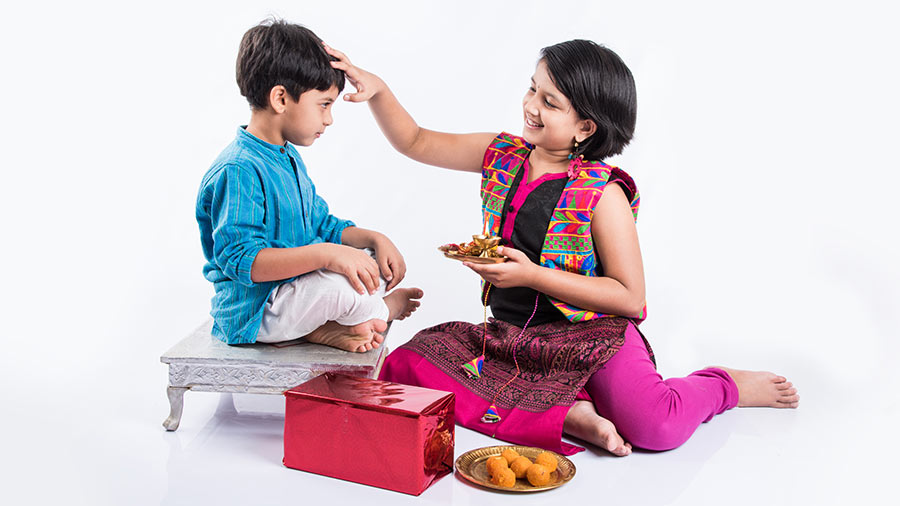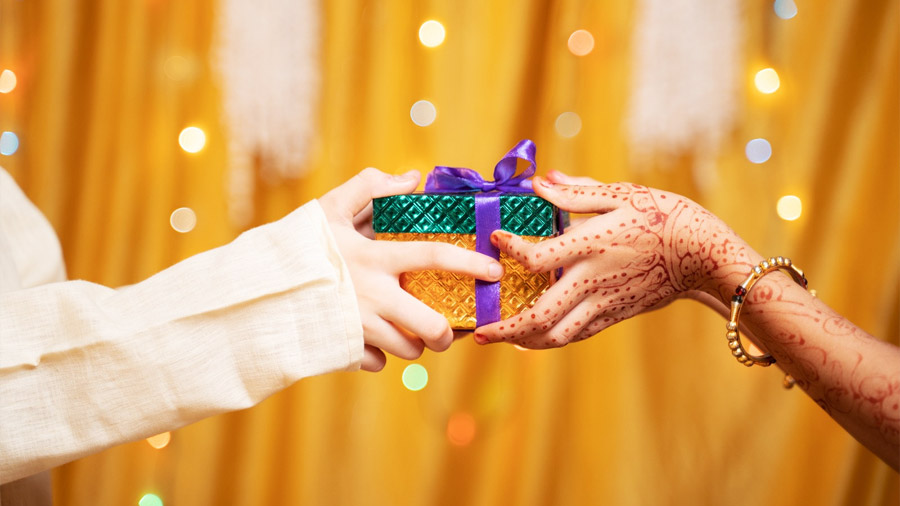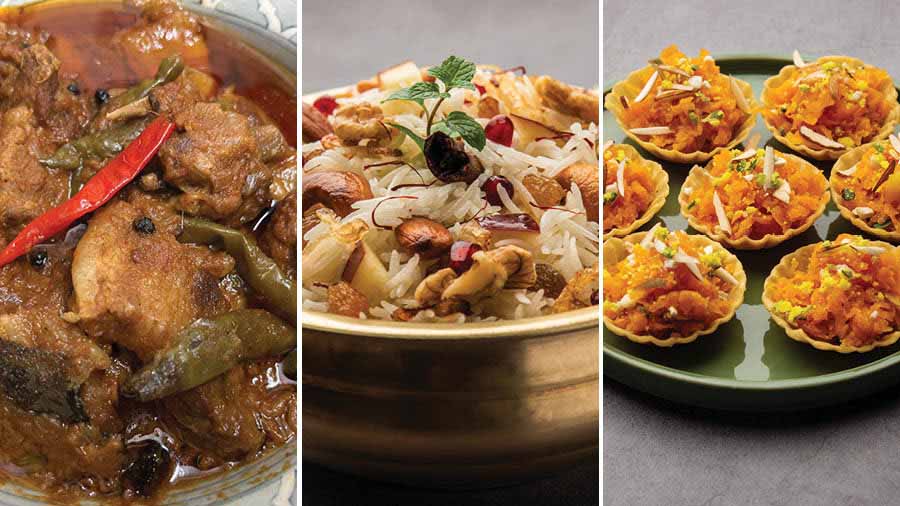The month-long celebrations that start with Durga Puja on the Bengali calendar are wrapped up with Bhai Phonta. To celebrate the bond between brothers and sisters, Bhatri Dwitiya or more colloquially Bhai Phonta is celebrated all over Bengal on the second day of Shukla Paksha (the bright fortnight) of Kartik month (the seventh month in the Bengali calendar).
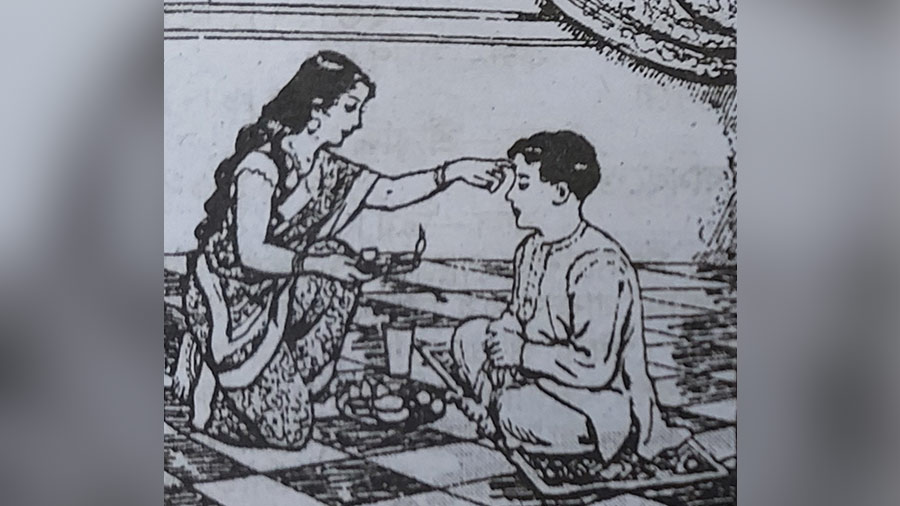
Some celebrate Bhai Phonta on Protipod (the first day of this fortnight). There’s a popular Bengali saying Protipode diye phonta, dwitiyate diya nita (tilak on protipod and invitation to a feast on the next day). The concept of putting phonta on Protipod is completely regional. In fact, the Sanskrit texts from where the Bengali version of the Bhai Phonta mantra has evolved talks of Bhatri Dwitiya and not Protipod. Another reason may be just to stretch the festival a little. In many families, phonta is given on Protipod but the grand feast is organised the next day.
The celebration takes on different names like Bhai Dooj and Bhagini hastha Bhojanam (Andhra Pradesh) in different parts of the country. The day is marked by sisters praying for the long life of brothers. This festival is more like a social custom where a tilak is put on the forehead of the brothers for their well-being.
As the legend goes

Bhai Phonta is a tradition practised through generations
File photographThere are many stories related to the festival. One of the most popular ones is that of Yama and Yamuna. Legend goes that despite being invited many times, Yama did not visit his sister Yamuna’s house. Then, on Dwitiya of Shukla Paksha of the month of Kartik, Yama finally visited Yamuna’s house. Yamuna was so happy to see her brother that she greeted him by putting a tilak on his forehead. She also prepared sweets and other delectables. Before leaving, when Yama wanted to give Yamuna a boon, she said that she wanted this day to be dedicated to brothers and sisters. The first reference of Yama and Yamuna (Yami) is found in the Rig Veda as twins. Yami lusted for Yama but the latter always denied it as incestuous. After many years, Yami put tilak on Yama’s forehead and Bhai Phonta evolved from there.
Another legend goes that when Krishna returned to Dwarka after killing Narakashur, his sister Subhadra greeted him with a tilak on his forehead and prayed for his long life.
Bhaier kopale dilam phonta…

Cover of the book ‘Na jaio jomer duar’
Bhaier kopale dilam phonta
Jomer duare porlo kanta
Yamuna dyay jom ke phonta
Ami di amar bhai ke phonta
(As I put tilak on my brother’s forehead, I pray for his immortality. Just like Yamuna put tilak on Yama’s forehead, I do the same on my brother.)
I have been reciting this since childhood as I put tilak on my brother’s forehead on Bhai Phonta. The ritual begins with the sister dipping the little finger of her left hand into curd, sandalwood paste, honey and kajal and then putting the tilak. After that, the younger of the two seeks blessings and the elder one bless by putting dhaan (paddy seeds) and durba (small doob grass) on the other’s head.
The same words keep changing a little from one region to another and one family to another. Some additions/alterations include “... Jom jemon chirojibi, bhai temon chirojibi/Swarge hulustul mortye joy, bhai bone phonta dile omor hoy roy” or “Jamunar haate phonta kheye jom holo omor/Aamar haate phonta kheye bhai hok omor”.
The variations can be attributed to regional and social differences.
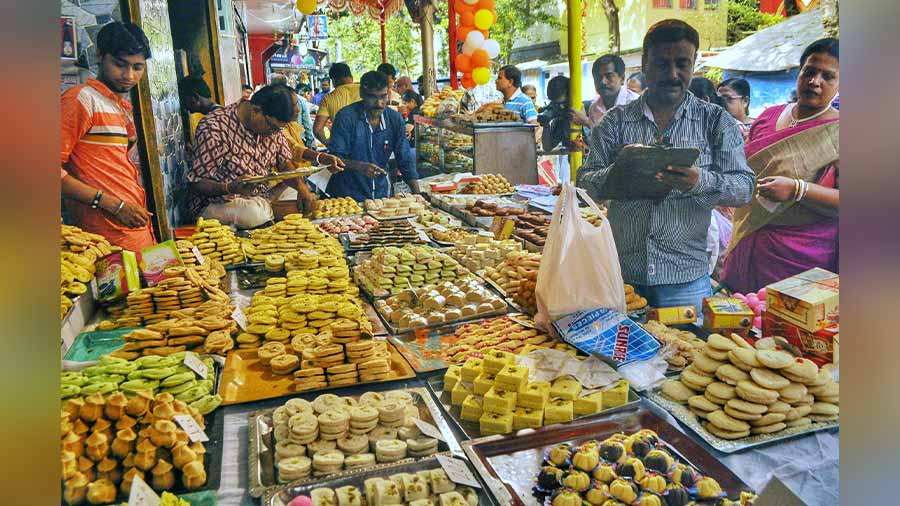
Sweets are an indispensable part of the celebrations
File photographThe popular words have been transferred from one generation to other orally. In the book Na Jaio Jomer Duar, author Tanmoy Bhattacharjee traces the origin of the Bhai Phonta verse in a Sanskrit mantra. Though it is used by some, the Bengali version seems to be more popular.
Bhratastob laltehong dadami tilakang subham
Atoporang Yamdware maya Duttang hi kantakam
Both in West Bengal and (erstwhile) East Bengal, the mantra has many versions. In Kishoreganj — Swarge hulusthulu, morte jokar/ Boin bhaiere dyay dwitiyar phonta/Bhai na jaio jomer duar/Jamunae phonta dia rakhshilo bhaiere/Aami bhai phonta dia rakhlam tumare/Jom duaro dia kanta/Bhai hoilo bephoi guta — the brother is compared with bitter food items (bephoi is a bitter fruit) so that even Yama rejects him.
In Pabna region of Bangladesh, the rhyme goes Bhaier kopale dilam phonta/ Jom duare porlo kanta/ Kanta jeno nore na/ Bhai jeno more na. Bhattacharya writes that this is a modern form of the popular rhyme and is also used in the Bankura district of West Bengal.
Bhai Phonta or Bhai Dooj
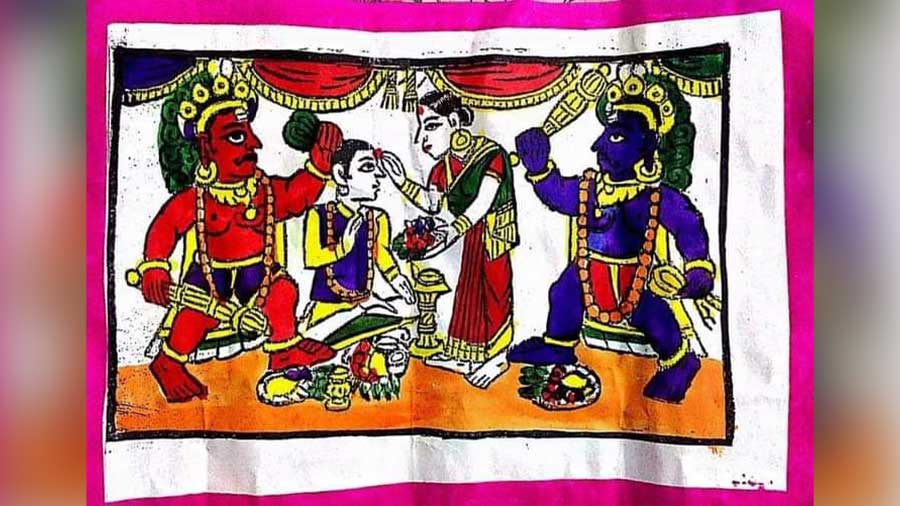
A traditional Newari painting showing Kija Puja
Wikipedia CommonsThe day is celebrated not only in Bengal but in other parts of India, too, and similar rhymes are recited there as well. For Bhattacharjee cites the rhyme recited in Bihar — Ganga pooje Yamuna ko/ Yami pooje Yamraj ko/ Subhadra pooje Krishna ko/ Ganga Yamuna neer bahe/ Mere bhai aap baare phulo phalo.
Mantra or rhyme
The celebration of this festival is marked by the chanting of the rhyme. Some consider a rhyme while some consider it as a mantra.
Academician Pabitra Sarkar explained “chhora (rhyme) is a part of folk lore, which has been transferred verbally. They have a lot of local elements and words because of changes that seep in from regional and social as they are passed on orally”. “The Bhai Phonta chhora has variations, depending on the zones, regions, social structure and dialects of people. A lot of local elements have been incorporated with time. I feel that these are replacements of mantras with an element of wish-fulfillment,” he said.
Barun Chakraborty, former professor of folklore, Kalyani University, said formalised forms of dialogue become popular by word of mouth. “It’s a form of folk literature. You don’t get any story in rhymes, some random colloquial words make up some images. Bhai Dwitiya is the sweetest festival of all, according to me. The sweet bond between brothers and sisters is renewed every year. Though the basic structure of the Bhai Phonta rhyme is the same everywhere, depending on the region, social and other differences, the expression varies.”
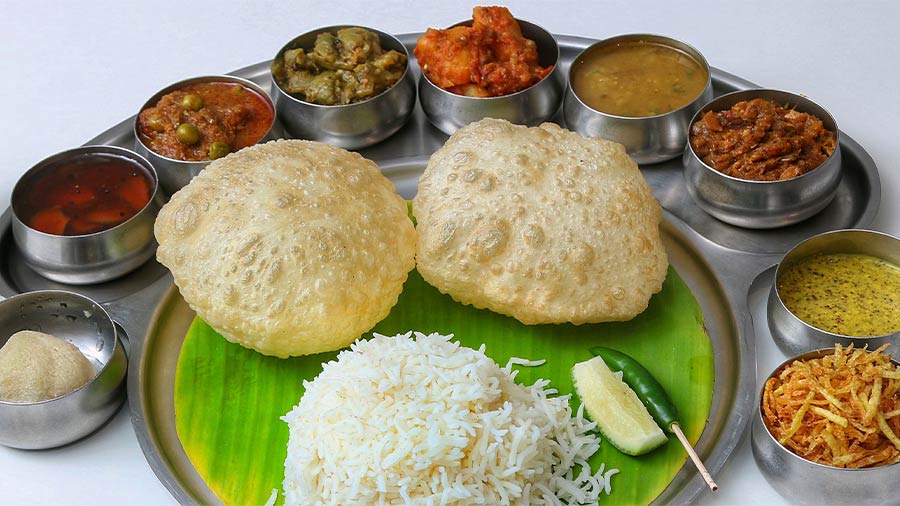
Usually a grand feast is organised by the sister for their brothers
File photographBhattacharjee said Bhai Phonta finds mention in Rig Veda, Bhavishya Purana, Padma Purana, Brahmanda Purana and other ancient texts. “With time, Bengali words started to replace the Sanskrit ones and different elements in the form of words started getting attached. The expressions vary according to regions and hence different variations of the same rhyme is noticed. People of different regions started adopting the rhyme in their own way. The basic structure remained the same. The local elements like the locality, food elements and different dialects got incorporated. I would like to call it a mantra as it is uttered in the middle of a ritual where a lamp is lit, dhan durba are used for the blessings. It’s like a ritual and hence, I prefer to call it a mantra. Mantras need not necessarily be in Sanskrit. Mantras can be in Bengali too. Since there’s an element of wish fulfillment here I would prefer to call it a Bengali mantra with its roots in Sanskrit, it has evolved out of Sanskrit. For me anything that is chanted for the well wishes is a mantra,” he concluded.


